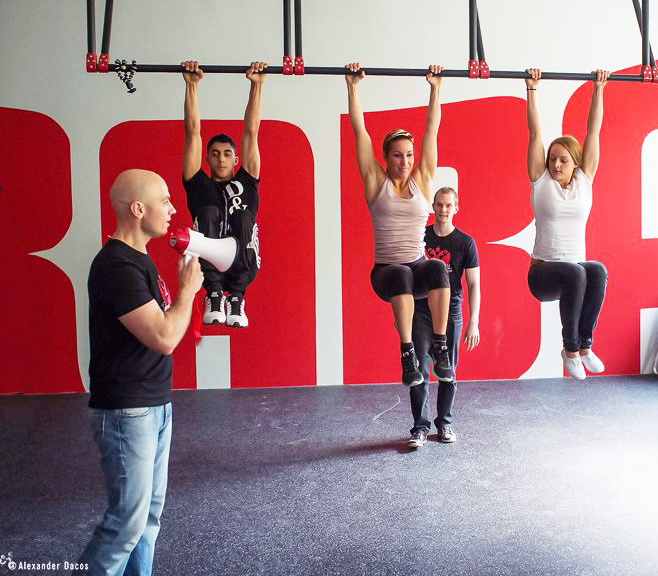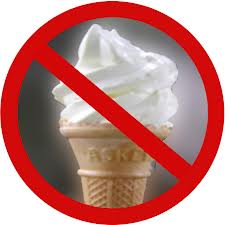(Translated from German. Prefer to read the original? Click here.)

Have you noticed that what we want, and what we need is often light years apart? Especially in the case with training and nutrition, where long-term goals and short-term gratification do not match.
If I want to eat an ice cream in the short term , but long term I want to have a washboard stomach, then I know that eating ice cream is not a step in the right direction, even though it feels good. Ice cream is delicious, but makes you fat!
Unfortunately, this law is much less obvious when training. What does an “eating ice cream” type of satisfaction look like in training?
Sweating, gasping for air , with burning muscles after a workout is a wonderful endorphin rush! Even if you have to convince your body to somehow crawl to the locker room, it’s still a great feeling, right? I love it! I would not trade it for any amount of ice cream!
But … Are you sure that your training has brought you closer to your goal? Could it be that the good feeling is just as deceptive as the delicious taste of the ice cream? When the high from the ice cream ends, I become tired. It takes some basic knowledge about nutrition to know that it feels good to eat sugar, but it does so much bad in the body. Just like when training.
“Come on! ” You might say. “The harder I work, the fitter I get!”
Are you sure? I know many who work hard on a regular basis for years, but very few who have come from A to B and achieved their goals. So many people also do not measure their progress. If one disregards the weight gain, only the good feeling stays when the ice cream has left.
“But I can feel that my training is good for me,” you say.
Bad food feels good . Poor training also . Do you know why? Because that instant gratification is lying to you.
 Wait! Do you know the guy with the huge chest from the gym? ( Yes – yes, certainly you know him ! ) He has huge pectoral muscles , wow, he can do neat stuff, and he presses and screams until all can see how strong he is. Unfortunately, he’s only good at the bench press. For a proper squat with his chicken legs—he does not dare. Don’t you think he enjoys his training ? He does – but he probably enjoys it because he has many experiences of success and that good feeling you get when you do exactly what you’re good at.
Wait! Do you know the guy with the huge chest from the gym? ( Yes – yes, certainly you know him ! ) He has huge pectoral muscles , wow, he can do neat stuff, and he presses and screams until all can see how strong he is. Unfortunately, he’s only good at the bench press. For a proper squat with his chicken legs—he does not dare. Don’t you think he enjoys his training ? He does – but he probably enjoys it because he has many experiences of success and that good feeling you get when you do exactly what you’re good at.
If you want to progress with your own general fitness, you should work on your weaknesses instead–but do not stop doing the skills you’re best at. The poor guy with the huge chest feels like an idiot when he does squats, so he does not make them better. Would it help him to continue to do the squat bench press? In the long term, yes. They would surely help him to be more proportional.
A well established program with squats would even improve his performance at the bench press. A balanced set of skills to have is certainly a better basis for the development of one-dimensional training. It is healthier and you’ll have more fun doing it. To specialize in just one thing has many serious weaknesses and is only a short-term pleasure. See professional sports!
It does not matter what your weak point is. It is an underdeveloped part of the body , or a fundamental movement pattern, like mobility, stability, or coordination …
To summarize:
- You have vulnerabilities
- Working on these weaknesses has the best cost- benefit ratio
- But to work on your weak points does not feel so great, because you ‘re doing exactly what you can not do well
Do you see ? It feels bad, and it brings you further, or it feels good, and you are racing against the wall. Instant gratification is often a bad adviser.
Don’t let your feelings lead your workouts. Be objective and work towards your goals instead. Then you will find success!
***
Robert Rimoczi, Senior RKC, Munich, Germany has opened a new gym. You can view his new site at: http://kraba.de/, email him here, or call the center at
0180 – 5 999 432.

















 Being a good student, teacher and athlete has always been a priority. This is why I choose to remain the student and the teacher in all aspects of life. Other than being a teacher of math and philosophy for the past 13 years, I am also a writer, gym owner, as well as a proud father and husband. I continue to challenge myself physically by competing in various sports and strength events including The Tactical Strength Challenge, Powerlifting, Bodybuilding and Brazilian Jiu Jitsu. From a young age I have taken a keen interest in health, fitness and personal growth. The goal was, and continues to be, mind/body performance optimization.
Being a good student, teacher and athlete has always been a priority. This is why I choose to remain the student and the teacher in all aspects of life. Other than being a teacher of math and philosophy for the past 13 years, I am also a writer, gym owner, as well as a proud father and husband. I continue to challenge myself physically by competing in various sports and strength events including The Tactical Strength Challenge, Powerlifting, Bodybuilding and Brazilian Jiu Jitsu. From a young age I have taken a keen interest in health, fitness and personal growth. The goal was, and continues to be, mind/body performance optimization.